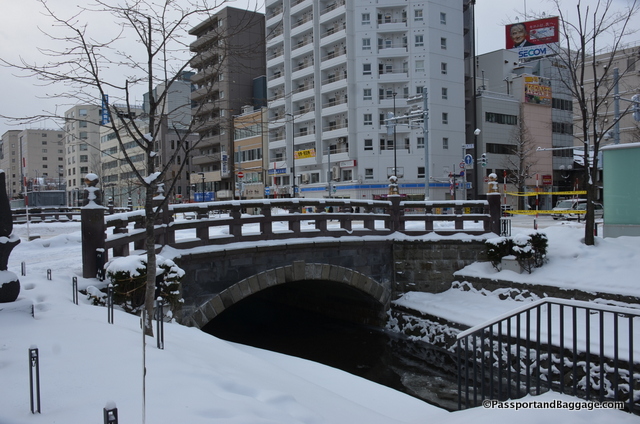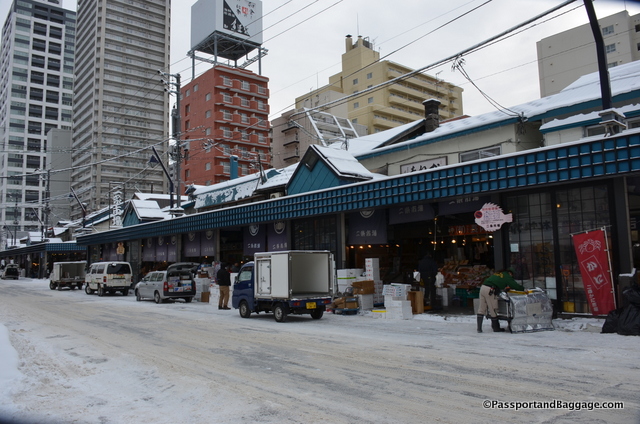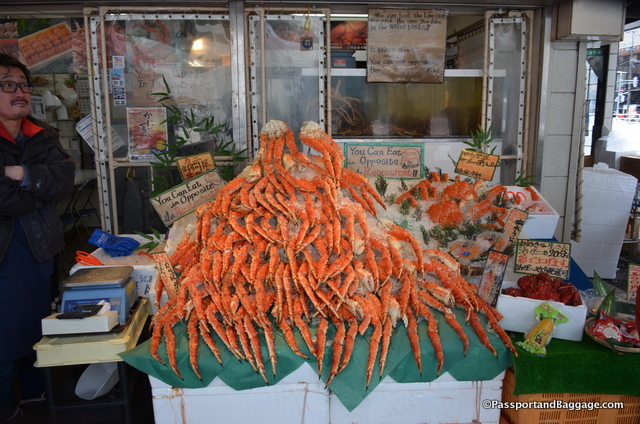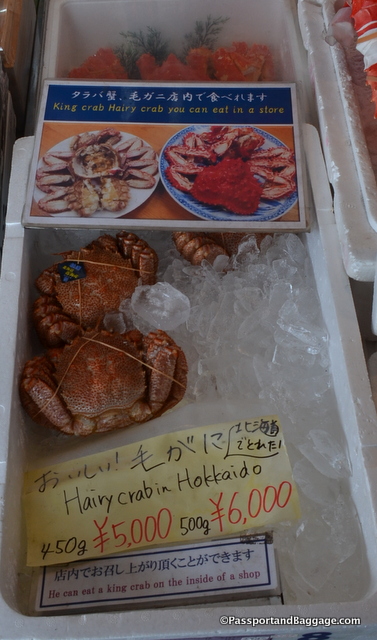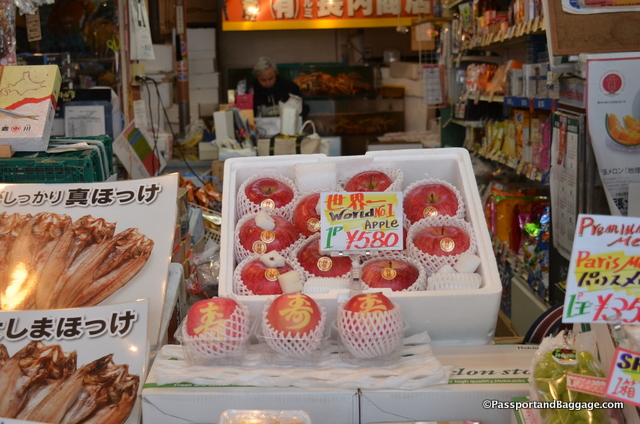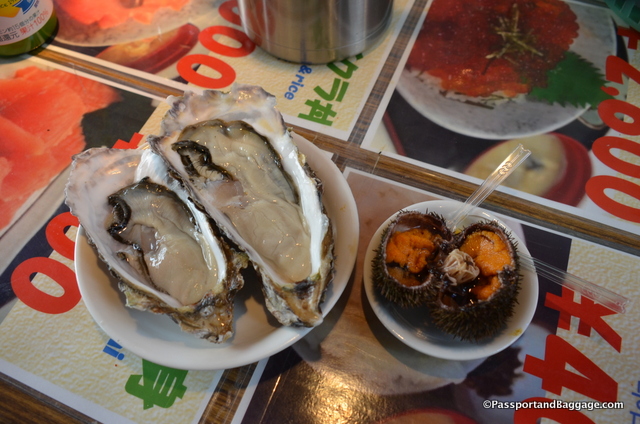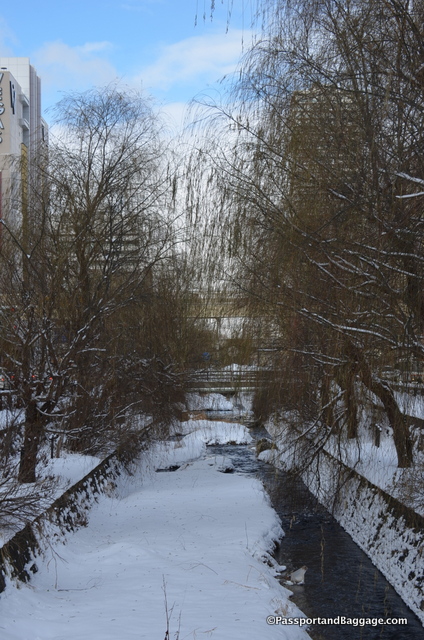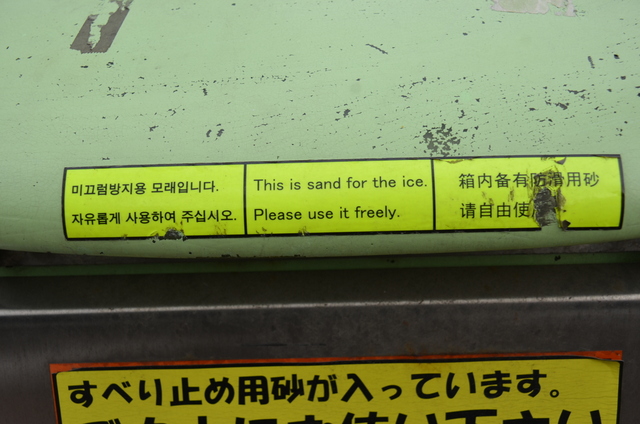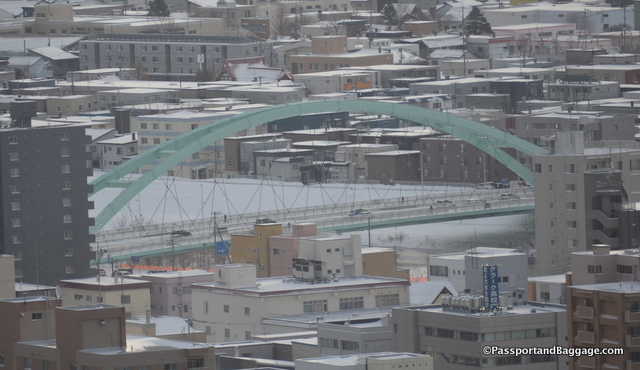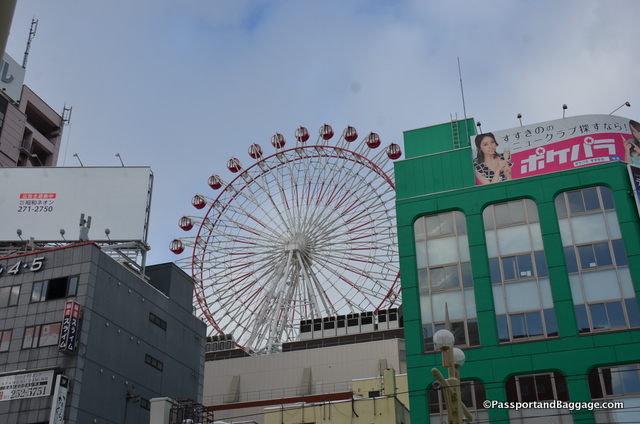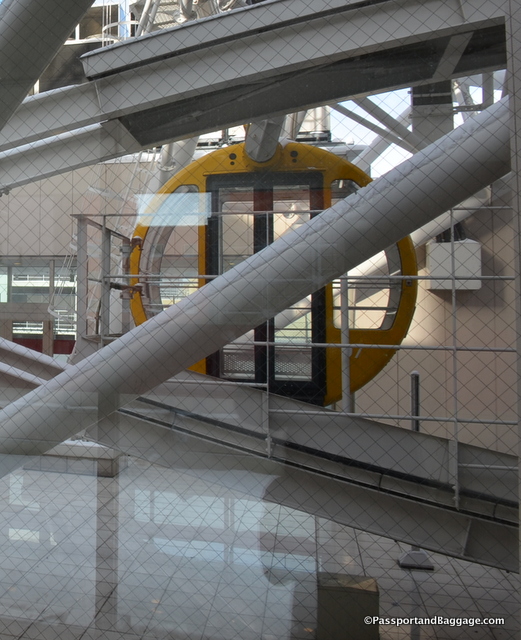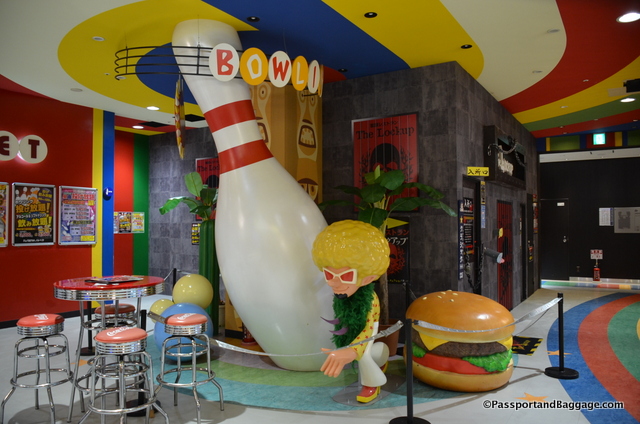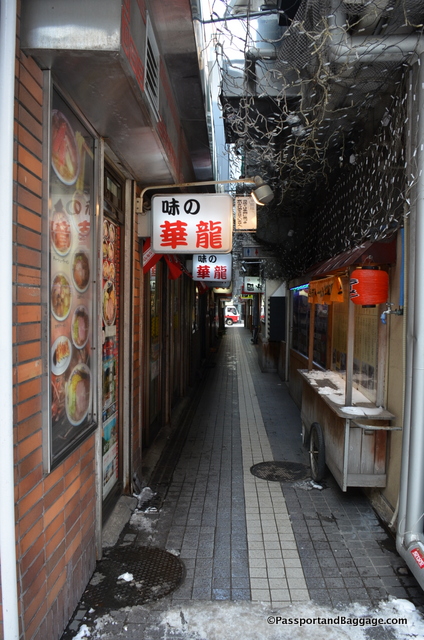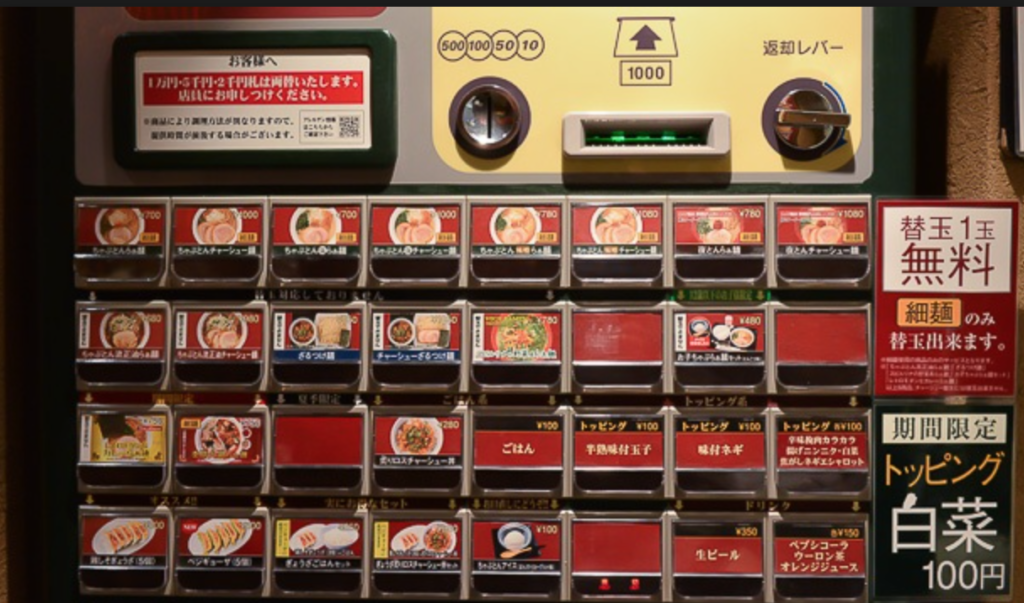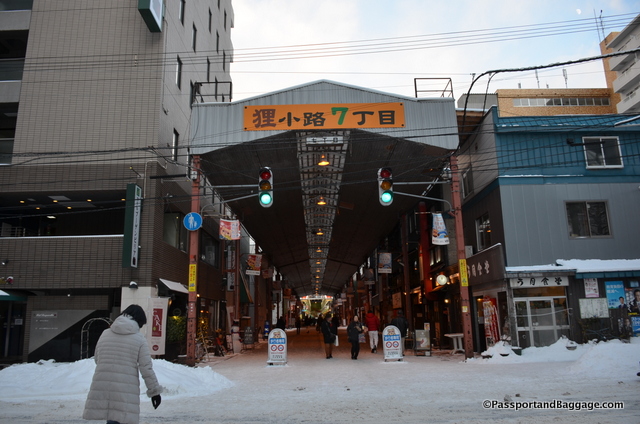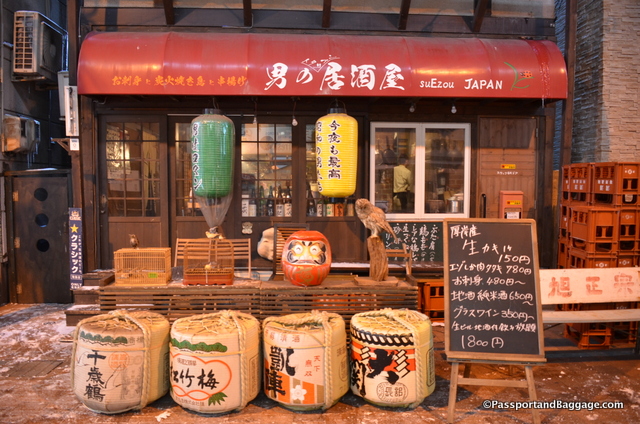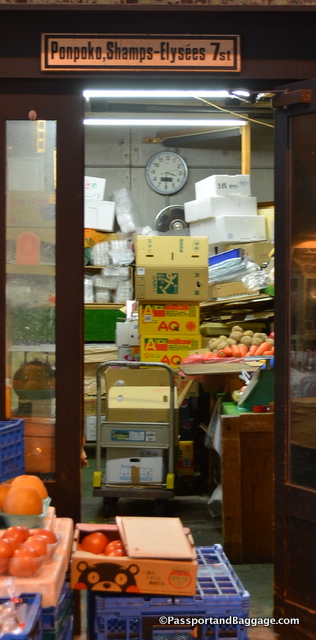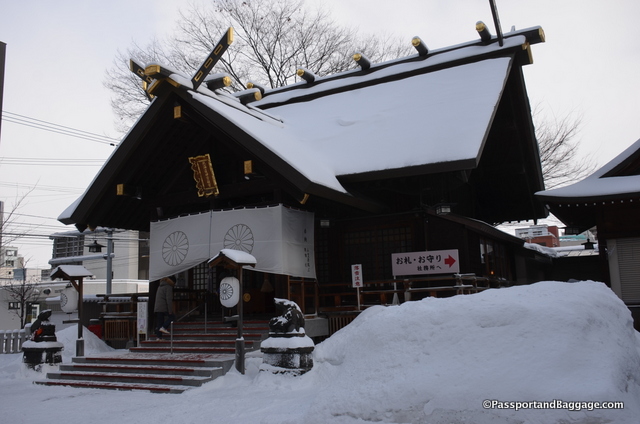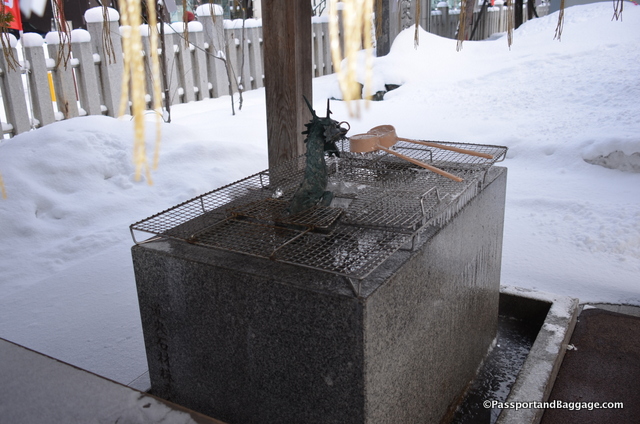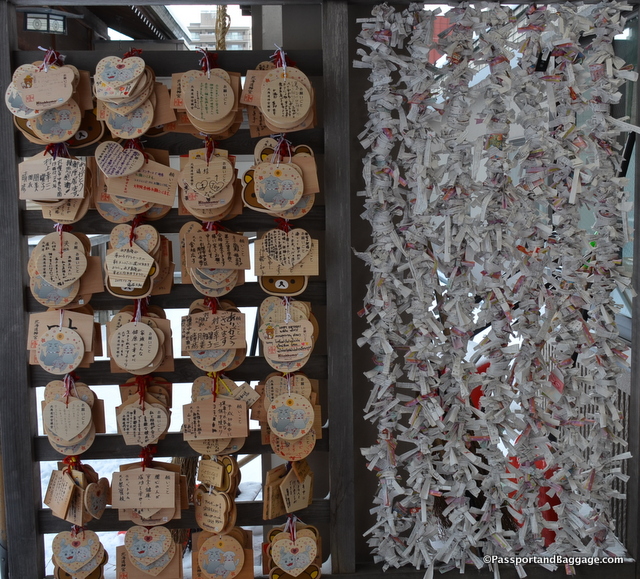December 2017
Sapporo is a very walkable city, and what you will notice is the lack of automobiles, most likely due to its incredible train system, subway system, and underground walkways.
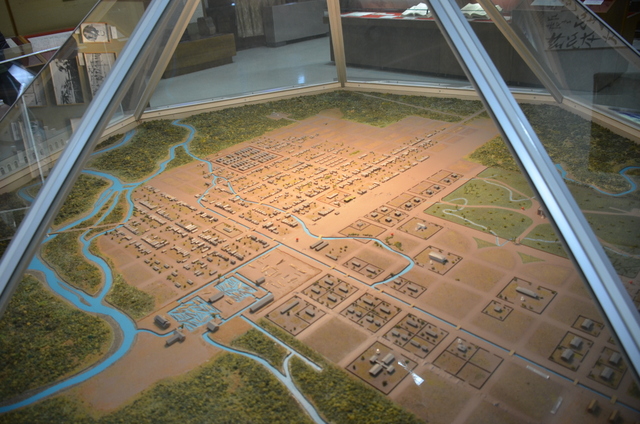
When you visit the Old Hokkaido Government Building there is a map that shows Sapporo in the 1800s, the Toyohira River runs through Sapporo and off of this is the small canal Soseigawa.
Sapporo is logically organized thanks to its grid system. The main thoroughfare, Ō-Dōri, meaning “Big Street”, runs east to west across the city and divides the city into North and South, while Sōsei-Gawa “Creation River” divides the city into West and East. Soseigawa is the small canal that runs through the downtown area. While covered in snow in winter, and a little hard to navigate, it is a public park with art during the rest of the year. You can even see it in the above 1800s map.
Walking along the Soseigawa River you will run into the Nijo Market, It is said to have developed in the early Meiji Period when fishermen from Ishikari Bay started selling fresh fish there. There used to be a row of fish markets along the Soseigawa River. Eventually, noodle shops, bars, and grocers moved in creating today’s Nijo Market. Today the market still serves the local population and judging by the number of boxes being wheeled out, the restaurant business as well, but it is also filled with tourists.
Throughout the market are sushi restaurants tucked in small alleys and around corners, or you can grab fresh fish grilled by the sellers right on the sidewalk.
There are a few places selling things other than fish. At today’s exchange rate that ¥5000 is around $45US for just under one pound
This is nothing like the Tokyo Fish Market, but it is still a fun place to spend an hour or so, and a great place to get a rice bowl topped with the freshest fish.
The Japanese are without a doubt some of the most polite people in the world. Along the sidewalks, you will find these free bags of sand, and everyone helps to spread the sand in the more slippery parts of town.
Six U.S. dollars will get you a very, very slow ride on the Noria on the 7th floor of the Norbesa Mall in the Susukino entertainment district of Sapporo. It is worth it if you love Ferris Wheels, and not for the faint of heart if you have issues with heights. If you wanted your feet planted firmly, but still want the view, read my post on the TV Tower here.
The mall is more of a giant carnival with games, a bowling alley and restaurants, it all comes alive after the sun goes down, as does the entire Suskino area.
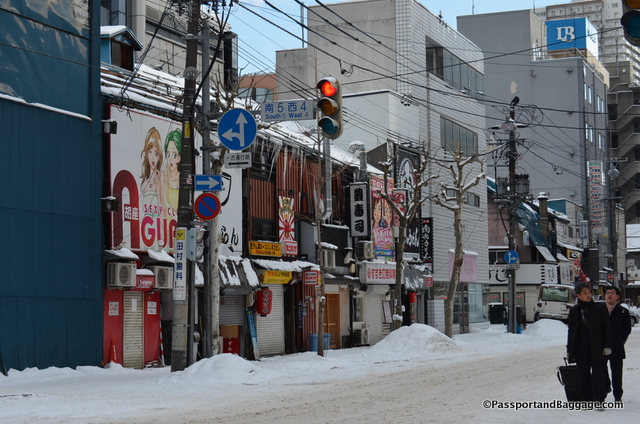
The Suskino Entertainment Area is filled with bars, pachinko palaces, restaurants, and even a red-light district
Susukino originated in 1871 when the Hokkaido Kaitakushi designated the area as the red-light district. After the construction of the district, the Kaitakushi named this place as “Susukino Yūkaku” (Susukino red-light district) and integrated other brothels into this district. Today, Susukino is Japan’s largest entertainment district outside of Tokyo. It is packed with stores, bars, restaurants, karaoke shops, pachinko parlors and red light establishments, a great place to wander in the evening.
However, it is also the home of Ramen Yokocho, or Ramen Alley, a very narrow paved lane lined with very tiny shops serving up Sapporo’s famous ramen, so should you be in the area during the day it is a great place to find a bowl of noodles.
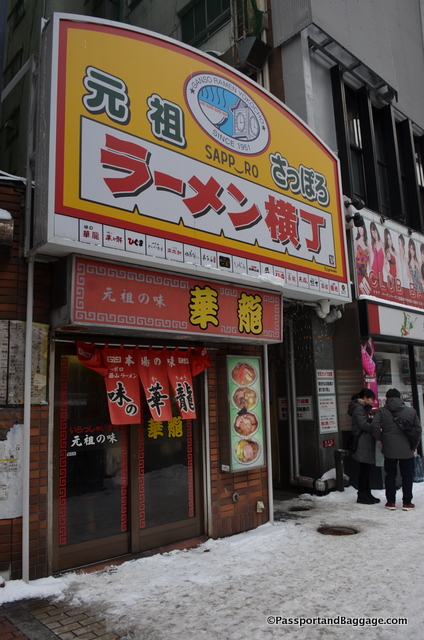
The first store in the alley is Aji No Karyo and proudly displays a sign on the window saying Anthony Bourdain ate here.
You can order at the table, or some restaurants allow you to pay and order at the same time via a machine.
Shopping seems to be the number one past time in Sapporo. I have never seen so many shopping malls per capita in one city in my life, I honestly think Sapporos shopping malls far outweigh the number in Tokyo, they are both above and below ground, so the numbers of stores are staggering. Most are modern high rises that can go two to five stories below ground and then another 7 above, but every once in a while you trip over an older fashioned covered mall like this one. These have the types of stores that serve locals, not tourists, but they are a respite from the wind and snow and somewhat fun to explore.
They even have big dreams – this gentleman brings memories of Paris to his store.
One of my favorite things is Matcha Kit-Kats, I was agog to find there are far more flavors than I ever knew. In fact, Kit Kat’s are quite the thing in Japan partially because Kit Kat sounds similar to the Japanese phrase kitto kattsu, or “you will surely win.” Because of this, it is often given as a good luck gift to students before their university exams. Nestle capitalized on this and the Japanese tradition of omiyage (or the gifting of regional specialties to family and co-workers after trips) and has released over 300 limited-edition seasonal and regional flavors since 2000. The newest is Tokyo Banana as of this posting.
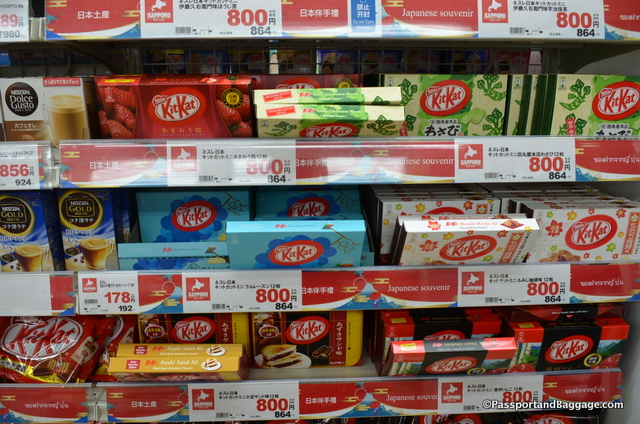
Can you read all the flavors? Strawberry, Wasabi, Rum Raisin, Momiji Anju Aji, Red Bean Sandwich, and Shinshu Apple.
One of the last items I did was to find a Shinto shrine, it was close to New Years and time to purchase protection amulets. The lovely Hokkaido Shrine Junga at Marayuma park was too far to navigate in the snow so I found a sweet shrine closer to downtown.
They have a small gift shop and they show all of the protection amulets with English translations in case you are interested. This temple seemed to have a predominance of transportation and auto safety amulets, but there are many others as well.
